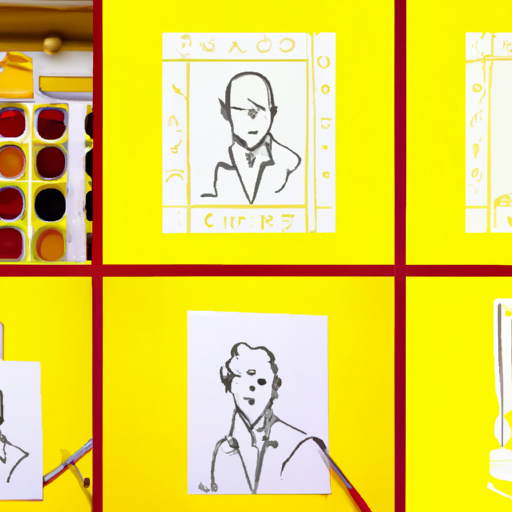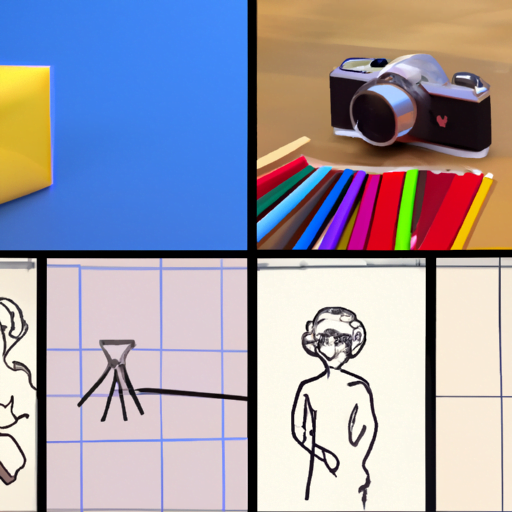
-
Table of Contents
- From Doodles to Masterpieces: The Process of Design Sketching
- The Importance of Design Sketching
- The Process of Design Sketching
- 1. Ideation
- 2. Concept Development
- 3. Iteration and Refinement
- 4. Presentation
- Case Studies: Design Sketching in Action
- 1. Apple’s iPhone
- 2. Architectural Design
- Conclusion
From Doodles to Masterpieces: The Process of Design Sketching

Design sketching is an essential part of the creative process for designers across various industries. It allows them to explore ideas, communicate concepts, and refine their designs before moving on to the final product. From quick doodles to detailed masterpieces, design sketching plays a crucial role in bringing ideas to life. In this article, we will delve into the process of design sketching, its importance, and how it can lead to remarkable outcomes.
The Importance of Design Sketching
Design sketching serves as a powerful tool for designers, enabling them to visualize and iterate on their ideas. Here are some key reasons why design sketching is important:
- Exploration: Sketching allows designers to explore a wide range of ideas quickly and freely. It encourages experimentation and helps generate new concepts that may not have been considered otherwise.
- Communication: Sketches serve as a universal language that can effectively communicate design concepts to clients, colleagues, and stakeholders. They provide a tangible representation of ideas that words alone cannot convey.
- Feedback and Collaboration: Design sketches facilitate collaboration and feedback. They allow designers to share their ideas with others, gather input, and make improvements based on the feedback received.
- Problem Solving: Sketching helps designers identify and solve design problems early in the process. By visualizing their ideas, designers can spot potential issues and make necessary adjustments before investing significant time and resources.
The Process of Design Sketching
The process of design sketching involves several stages, each contributing to the development of a successful design. Let’s explore these stages in detail:
1. Ideation
The first stage of design sketching is ideation. This is where designers brainstorm and generate a multitude of ideas. During this stage, it’s important to let creativity flow without judgment. Sketching allows designers to quickly capture their ideas on paper or digitally, exploring different possibilities and variations.
For example, when designing a new product, a designer may sketch various shapes, forms, and configurations to explore different design directions. These initial sketches serve as a starting point for further refinement.
2. Concept Development
Once a range of ideas has been generated, the next stage is concept development. Designers select the most promising concepts and begin refining them further. This involves adding more details, exploring different perspectives, and considering factors such as functionality, aesthetics, and user experience.
During this stage, designers may create more detailed sketches, incorporating annotations and callouts to explain specific design elements. These sketches help designers visualize the concept in greater detail and communicate their ideas effectively.
3. Iteration and Refinement
Iteration and refinement are crucial stages in the design sketching process. Designers review their initial sketches, gather feedback, and make necessary adjustments to improve the design. This iterative process allows designers to refine their ideas, address any issues, and enhance the overall design.
For instance, a designer working on a website layout may sketch multiple iterations, experimenting with different arrangements of elements, color schemes, and typography. Each iteration helps the designer refine the design based on feedback and their own critical evaluation.
4. Presentation
Once the design has been iterated and refined, it is ready for presentation. Design sketches are an effective way to communicate the final concept to clients, stakeholders, or team members. They provide a clear visual representation of the design, allowing others to understand and evaluate the proposed solution.
Designers may create polished sketches or renderings using various tools and techniques such as markers, digital software, or 3D modeling. These sketches showcase the design in its best light, highlighting key features and demonstrating the intended user experience.
Case Studies: Design Sketching in Action
Let’s explore a couple of case studies that demonstrate the power of design sketching in real-world scenarios:
1. Apple’s iPhone
When Apple was developing the first iPhone, design sketching played a pivotal role in shaping its iconic design. The late Steve Jobs famously emphasized the importance of sketching during the product’s development. The design team created numerous sketches, exploring different form factors, screen sizes, and user interfaces.
These sketches allowed the team to visualize and refine the design, leading to the sleek and intuitive device we know today. Without the iterative sketching process, the iPhone may not have achieved its groundbreaking design and revolutionized the smartphone industry.
2. Architectural Design
In the field of architecture, design sketching is an integral part of the design process. Architects use sketches to explore different spatial arrangements, experiment with building forms, and communicate their ideas to clients and contractors.
For example, renowned architect Frank Gehry is known for his sketch-based design process. His sketches capture the essence of his iconic buildings, such as the Guggenheim Museum in Bilbao, Spain. Gehry’s sketches not only serve as a means of communication but also as a source of inspiration for the final design.
Conclusion
Design sketching is a powerful tool that allows designers to explore ideas, communicate concepts, and refine their designs. It plays a crucial role in the creative process, enabling designers to visualize their ideas, gather feedback, and make necessary adjustments. From the initial ideation stage to the final presentation, design sketching guides designers towards remarkable outcomes.
By embracing the process of design sketching, designers can unlock their creativity, solve design problems, and create innovative solutions. Whether it’s the development of groundbreaking products like the iPhone or the creation of iconic architectural masterpieces, design sketching is a fundamental step towards bringing ideas to life.
